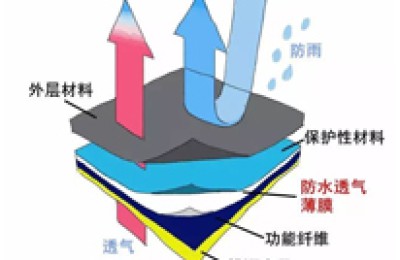Yesterday, the spot exchange rate of RMB against the US dollar hit a new high for the third consecutive trading day, with the RMB against the US dollar rising above the 6.10 mark for the first time, reaching 6.0960. Although the RMB returned to above 6.10 against the U.S. dollar near the close, the market’s expectations for an accelerated appreciation of the RMB in the near future are still strong. Guotai Junan Macroeconomic Analyst Xue Hexiang said in an interview with reporters yesterday that although the RMB depreciation is expected to be stronger in the next two to three years, the RMB has continued to rise above 6.05 in the past six months, and the possibility of a cumulative appreciation of 3% for the whole year still exists. This round of RMB appreciation still exists. The high may be around 6. He said that although the continued appreciation of the RMB is not conducive to processing trade and exports, it is also obviously beneficial to Chinese companies going abroad to purchase assets and resources. The appreciation of the RMB also cooperates with the RMB internationalization strategy currently being laid out and helps The Chinese economy is competing for more say in the world.
The central bank is happy to see the RMB continue to appreciate
Since the beginning of this year, the RMB has experienced two continuous appreciation processes against the US dollar. From the beginning of this year to the end of May, the cumulative appreciation rate was nearly 2%; from the end of June to mid-August, the cumulative maximum appreciation rate was 0.64%; after 1 After more than a month of consolidation and shock, the RMB has continued to appreciate continuously against the US dollar since this week. As of yesterday, the spot exchange rate broke through the 6.10 mark and reached 6.0960, setting a new high since the exchange rate reform. As of yesterday, the cumulative appreciation rate of the RMB against the US dollar during the year has reached 2.12%, far exceeding last year’s 1.02%. At present, the market is increasingly bullish on the RMB. Optimistic expectations are that the RMB will rise above 6.05 against the US dollar before the end of this year. As early as the beginning of this year, most institutions believed that the appreciation of the RMB this year will be the same as last year. , the most optimistic expectation is that the cumulative increase will reach 3%.
“In the short term, it is possible for the RMB to rise by 3% against the US dollar, or even exceed 6.05.” Xue Hexiang, a macroeconomic analyst at Guotai Junan, said yesterday, “Affected by the macroeconomic downturn and the expectation that the central bank may expand the volatility of the RMB exchange rate, in September Before March, the market originally had strong expectations for RMB depreciation; but after the National Day, the market’s expectations for depreciation were disappointed. Offshore NDF experienced rapid appreciation this week, coupled with the appreciation reflected in the central bank’s setting of the central parity rate of the RMB exchange rate. preference, resulting in the rapid appreciation of the RMB against the US dollar this week.”
Liu Dongliang, senior analyst at the Financial Market Department of China Merchants Bank, also believes that the continuous appreciation of the RMB is a manifestation of the central bank’s strong intention to appreciate the RMB. “With the central parity continuing to rise, it is only a matter of time before the spot exchange rate enters the appreciation channel again.”
Appreciation helps companies invest overseas
The continuous rapid appreciation of the RMB has the most direct impact on the further dimming of China’s export prospects. “Under this continuous appreciation, the original processing trade and non-value-added export companies can no longer continue; the cost advantage is also disappearing rapidly.” Xue Hexiang predicted, “The export data in September unexpectedly fell sharply, indicating that this year’s export growth The growth rate may not be as fast as the market’s previous expectation of 8%-9%, and may only be 6%-7%, and its contribution to China’s economic growth will be further reduced.”
“The positive effect of appreciation on the economy is also emerging.” Xue Hexiang said, “In recent years, there have been more and more cases of Chinese companies going abroad and purchasing assets and resources overseas. The continued appreciation of the RMB is a continued benefit to these companies; On the other hand, the continued rise in import data is also conducive to accelerating the internationalization of the RMB, thereby helping the Chinese economy compete for more say in the world.”
“Although China’s foreign exchange holdings turned to a basic balance in the second half of the year from the continuous outflow in the first half, considering the possible future depreciation trend of the RMB, overseas hot money did not flow into China significantly.” Xue Hexiang said, “The short-term continuous appreciation trend of the RMB is difficult to It lasted too long. In late September, China’s economy showed signs of weakening again, and the Shanghai Free Trade Zone’s policy on exchange rate reform also failed to materialize. None of these support the continued rapid appreciation of the RMB; for transactional investors, short-term You can continue to be long in RMB, but for corporate investment, it may be a great opportunity to convert RMB into US dollars for overseas investment.”
RMB appreciation eats up export profits
As the RMB continues to appreciate, exhibitors at the Canton Fair claim that “export pressure has increased sharply.” Yesterday, the central parity rate of RMB against the US dollar rose to a record high, breaking through the 6.1 mark for the first time yesterday, with the price quoted at 6.097. Exhibitors entering the second day of the 114th Canton Fair shouted that “exporting is getting more and more difficult.” The central parity rate of RMB against the U.S. dollar at the Autumn Trade Fair in the same period last year was about 6.3.
“I have participated in the Canton Fair for more than 20 years. I intuitively feel that changes in the RMB exchange rate have a great impact on export-oriented companies.” Liu Xuezhong, president of Shanghai Shangli Heavy Industry, was interviewed by a reporter from Nandu yesterday. For example, eight years ago, the RMB was against the U.S. dollar. The median price is around 8.1. It was about 6.5 five years ago, but now it has exceeded 6.1. For every one million US dollars worth of business ten years ago, the company has lost nearly 2 million yuan due to exchange rate changes. These price differences consume the company’s net profits, making exporting increasingly difficult.
Jiang, an industry manager at the Home Appliances Exhibition Area of the Canton Fair, also bluntly said that the current average profit margin of domestic small home appliances does not exceed 5%. Once the RMB appreciates, export profits will be further compressed.
According to official statistics, the cumulative appreciation of the RMB during the year has exceeded 2%.
The reporter interviewed Canton Fair exhibitors and learned that many companies did not dare to raise prices rashly. Because the entire industry’s products, quotations and other information can be circulated very conveniently domestically and even internationally, once prices are raised, customers are likely to be lost.
The measures taken by enterprises are the following: they may work internally to improve R&D and go upstream, they may reduce costs and reduce consumption, or they may reduce exports and expand domestic demand. Generally speaking, exchange rate risks can only be dealt with passively.
“The current exchange rate trend is conducive to imports and not conducive to exports. Enterprises should take the opportunity to import some equipment and technology to further promote transformation and upgrading.” Li Youhuan, director of the Comprehensive Development Research Center of the Guangdong Academy of Social Sciences, told Nandu reporters. In addition, the Canton Fair adopted it for the first time. The practice of reporting total transaction volume in RMB is worthy of accelerated promotion in all types of foreign economic affairs in the future, and will help all walks of life at home and abroad get used to and accept denominated and settled in RMB.
The yuan breaks through for the first time. Canton Fair exhibitors complain
Yesterday, the spot exchange rate of RMB against the US dollar hit a new high for the third consecutive trading day, with the RMB against the US dollar rising above the 6.10 mark for the first time, reaching 6.…
This article is from the Internet, does not represent Composite Fabric,bonded Fabric,Lamination Fabric position, reproduced please specify the source.https://www.yjtextile.com/archives/16496






